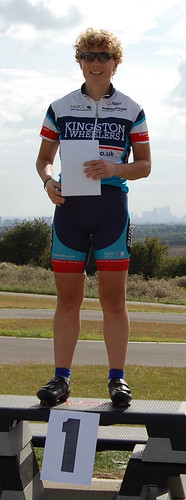Two things stood out for me in particular from Joe's post:
1. Training Stress Balance (TSB, or CTL minus ATL) should be about +20 by race day.
2. Total loss of Chronic Training Load (CTL, aka fitness) should be kept to about 10%.
I had a look at my own Performance Management Chart from WKO+ and checked out the numbers. Sure enough, between my taper start date of July 5 and race date of July 26, my CTL (blue line) had gone from 133 to 112, a 15% drop. And my TSB (yellow line) was over 30, way too high! Ironically, being more "rested" through a lower ATL (red line, aka fatigue) and higher TSB is the very thing that helped me feel slow and tired and flat during the race.
Tapering is certainly part art, part science, and there are a lot of factors that could have affected my race day readiness in Lake Placid. But from studying my data below, I can see clearly now how my drastically reduced training load -- too much too soon -- nearly blew my race though a poorly-executed peak period and taper.

How not to peak/taper
In Part II I'll take a stab at describing what my peak period and taper for Kona should look like, and what I'll do differently to achieve it (and in doing so, hopefully achieve a better race day freshness than I did at Lake Placid).
If you're not familiar with WKO+ and all the terms I've used, here's a basic crash course.
